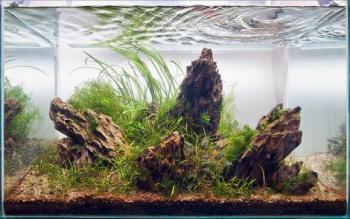A great aquarium is really a planned fish community where the shape, size and layout are all essential. It’s true that some individuals have had great outcomes with hit and miss techniques, but they’ve been lucky. You are able to only be certain of success in the event you start by considering the conditions under which the fish will live.
These conditions could be created by you, and in doing so you not just need to discover from nature, but enhance upon nature to supply an ideal balanced world where various varieties of fish might be born, live together and thrive. This isn’t so easy as it might sound simply because nature has a way of striking a balance within the entire of her complex structure; if she did not, the natural framework of animal and vegetable life would crumble. As a result, unless we begin with the concept of ‘balance’ foremost in our minds, it’s likely that ‘unbalanced’ conditions in our aquariums might trigger disastrous outcomes.
A balanced aquarium, in a factual sense, is really a myth. It implies that once an aquarium is set up it’ll look after itself-the plants giving off a balanced quantity of oxygen to suit the requirements of the fish, and also the fish exhaling the essential carbon dioxide needed by the plants on a fair exchange basis. Actually, the oxygen content of water is more dependent on the surface area of water exposed to the atmosphere than it’s on plant life. Under reasonable conditions, any oxygen deficiency is instantly made up from oxygen within the atmosphere passing into answer with the water.
Plants do assist with the provision of oxygen when under the influence of strong light (see photosynthesis) and, if the oxygen so produced is excessive, it’ll pass off into the atmosphere. Bubbles of oxygen can frequently be seen rising to the surface from the plants.
Carbon dioxide, on the other hand, passes out of the water into the atmosphere at a a lot slower rate than oxygen. It’s excessive carbon dioxide within the water that causes fish to rise to the surface ‘gasping for air’, not oxygen deficiency.
These facts show that a really balanced aquarium isn’t feasible to maintain in a technical sense. Nevertheless, the term is really a great one, it suggests that the aquarist ought to maintain a balance by not overcrowding his fish; this will decrease the possibility of excessive carbon dioxide production. He ought to also make certain that the surface area of water is adequate, he ought to remove excessive excreta and debris, and he ought to not overfeed. In more general terms, maintaining balance means utilizing typical sense and knowledge to maintain a fish I community in a ‘balanced condition’.
The shape of the aquarium is the initial consideration. It ought to not be too tall or narrow, as oxygen content, as previously stated, is more dependent upon surface area than on the actual volume of water.
An ideal size is 24 in. x 12 in. x 12 in., and this is an simple one to acquire in the event you prefer to purchase a ready-made tank. I don’t suggest the fancy shaped tanks many aquarists like to make for the odd corner or shelf simply because, even though a tank of unusual size or shape might be decorative, it frequently has the limitations of a little surface area, and, apart from the correct food and temperature, fish require lots of room in which to live and turn out to be fully developed. In the event you restrict them to a confined space, or a tank with an inadequate surface area, you produce an environment where they’ll be forced to adapt themselves by remaining little and stunted.
A tank 12 in. X 12 in. X 12 in. will include one cubic foot of water with a surface area of one square foot. Indeed, the exact same quantity of water could be utilized in a tank 6 in. deep X 24 in. x 12 in., giving a surface area of two square feet. This larger tank will permit a higher number of fish to exist in comfort than within the one foot square tank, even though both include the exact same quantity of water.
To discover how a lot water an aquarium will hold, use the following technique of calculation:
(Length in. x Breadth in. x Width in.) / 1728 = Capacity (cu. ft)
The above formula gives the capacity in cubic feet and, as one cubic foot of water equals 6.25 gallons, you only need to multiply the product by 6¼ to discover how many gallons the aquarium will hold.
One gallon of water weighs 10 lb.
One cubic foot of water weighs 62.5 lb.
It’ll as a result be seen that a tank 24 in. x 12 in. x 12 in. will include two cubic feet of water, weighing 125 lb.
Whilst the largest feasible surface area is probably the most desirable, it doesn’t make an attractive tank if the depth is too shallow, so it’s greatest to strike an average. The table will act as a guide to suitable proportions.

